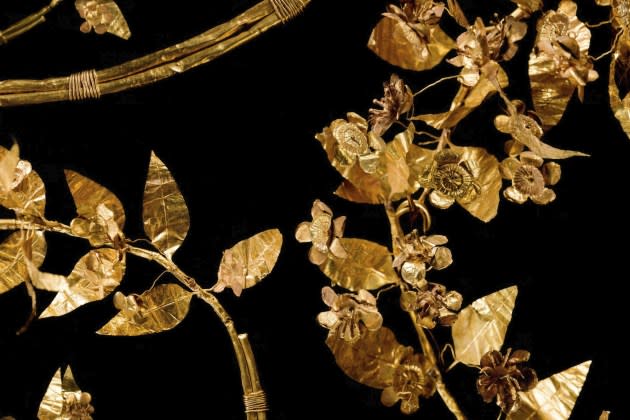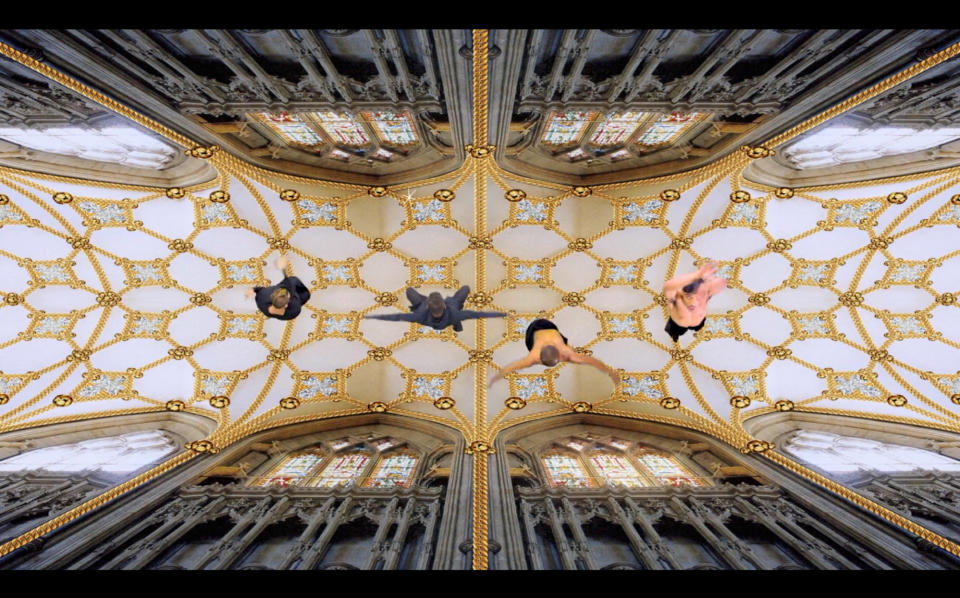Brooklyn Museum Reveals Fall Exhibition With a Focus on Gold

Gold in all its glory will be the focus of the Brooklyn Museum’s fall exhibition “Solid Gold.”
Spanning 6,000 years of history through cultures past and present, the show will examine gold as a medium and a color and its significance throughout. Scheduled to debut Nov. 15, the immersive exhibit will run through July 6. From 13th-century Italian altar pieces to contemporary sculptures, the 400-plus gold objects that will be showcased include fashion, jewelry, paintings, sculpture and film. If it all sounds celebratory, it should. The Brooklyn Museum is commemorating its 200th anniversary.
More from WWD
Reflecting on the Next Louis Poulsen Icon, as It Celebrates 150 Years
EXCLUSIVE: Brilliant Earth Expands Its Roots in the Bridal Category With Signature Collections
EXCLUSIVE: Caviar Kaspia and Begüm Khan Team Up for Bejeweled Capsule
Senior curator of fashion and material culture Matthew Yokobosky said the idea sprang from multiple conversations about what subject might be celebratory and serious enough to mark that milestone. Gold qualified on both fronts, but the concept was a tall order. He said he joked with coworkers, “Could you pick a bigger topic?”
The curator spent a good chunk of last summer poring over the museum’s permanent collection of 150,000-plus pieces, including more than 4,000 items with some element of gold pressed. His research required further digging, since the collection’s database described some items simply as “metal” without specifying which type. Visitors will find about 170 pieces that have not been seen in decades or never shown publicly.
For example, a wooden sarcophagus from Dynasty 22 (945-740 BCE) will be on view for the first time in more than 100 years.
To draw attention to the ancient world’s fascination with gold, there will be 181 gold pieces from the Hellenistic period and a selection of ancient jewelry, helmets and chainmail covering three millennia across Egypt, the Mediterranean coast and the pre-Hispanic Americas. Another section will detail the origins of gold in Nubia, South Africa, Colombia, Brazil and other locales to highlight the environmental impact and repercussions on people. There will also be golden smiles — gold discs and facial jewelry that were made from the first millennium CE — as once seen in ancient Panama.
Set up in chronological order and organized in eight sections, there is a skeleton narrative to the show, which is not meant to be a complete history of gold, but rather “a celebration of the museum’s collection that is infused with fashion, jewelry and artwork,” Yokobosky said. The aim is to create a conversation, collision and juxtaposition of works between the collection and 21st-century design, he said. “It’s interesting that in our world, we’ve decided that gold has value and beauty. On one side, there is this primordial draw to it that gold on earth is equivalent to the sun,” said Yokobosky, citing sculpture and Louis XIV’s reputation as the “Sun King, where everything important radiated from him.”

Along with its primordial aspect, the fact that gold is a long-lasting metal that does not erode, evaporate or combust, as some metals like silver and aluminum do, is part of gold’s universal appeal, he said. Its association with wealth and beauty heighten that appeal. “That’s why its value always seems to be [going] up and up and up. Unlike so many things that you might invest money in, gold doesn’t change. What you bought is what you have always.”
“Solid Gold” will also delve into the hazards of mining for gold in Egypt with a historian’s account of what it was like to work by candlelight in such enclosed spaces, despite the risk of cave-ins and dangerous fumes from the explosives that were needed to loosen the rocks. “Once you hit the 20th century, there was of course more technology for mining, but our appetite for gold is just unquenchable so gold mining continues in even greater numbers today,” Yokobosky said.
In terms of the gold-tinted fashion, there will be a prototype of the fly necklace for Elizabeth Taylor’s role in the 1963 film “Cleopatra,” a 1989 Azzedine Alaïa chainmail dress for Grammy winner Tina Turner and a 2004 John Galliano-designed Christian Dior that blends Egyptian historical accents and the luxury house’s controversial 1954 “H-Line.”
In other news, 10 days after hundreds of pro-Palestinian protesters rallied in the lobby of the Brooklyn Museum, the home of its director and those of several of the museum’s trustees were vandalized Tuesday. Asked for comment regarding Tuesday’s incidents, a Brooklyn Museum spokesperson issued this statement, “For two centuries, the Brooklyn Museum has worked to foster mutual understanding through art and culture, and we have always supported peaceful protest and open, respectful dialogue. Violence, vandalism and intimidation have no place in that discourse.”
Best of WWD

 Yahoo Lifestyle
Yahoo Lifestyle 
